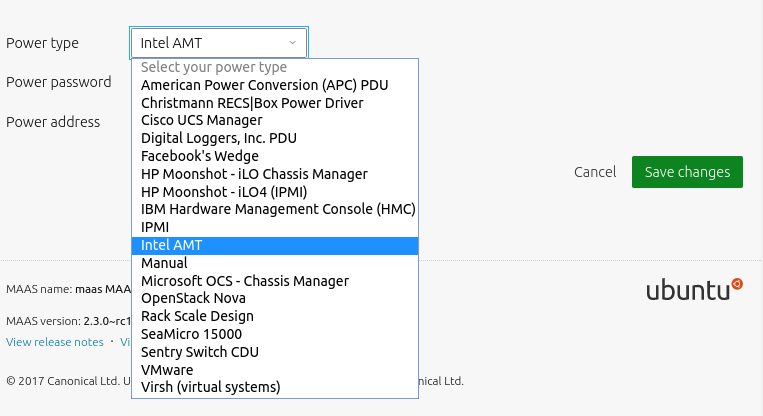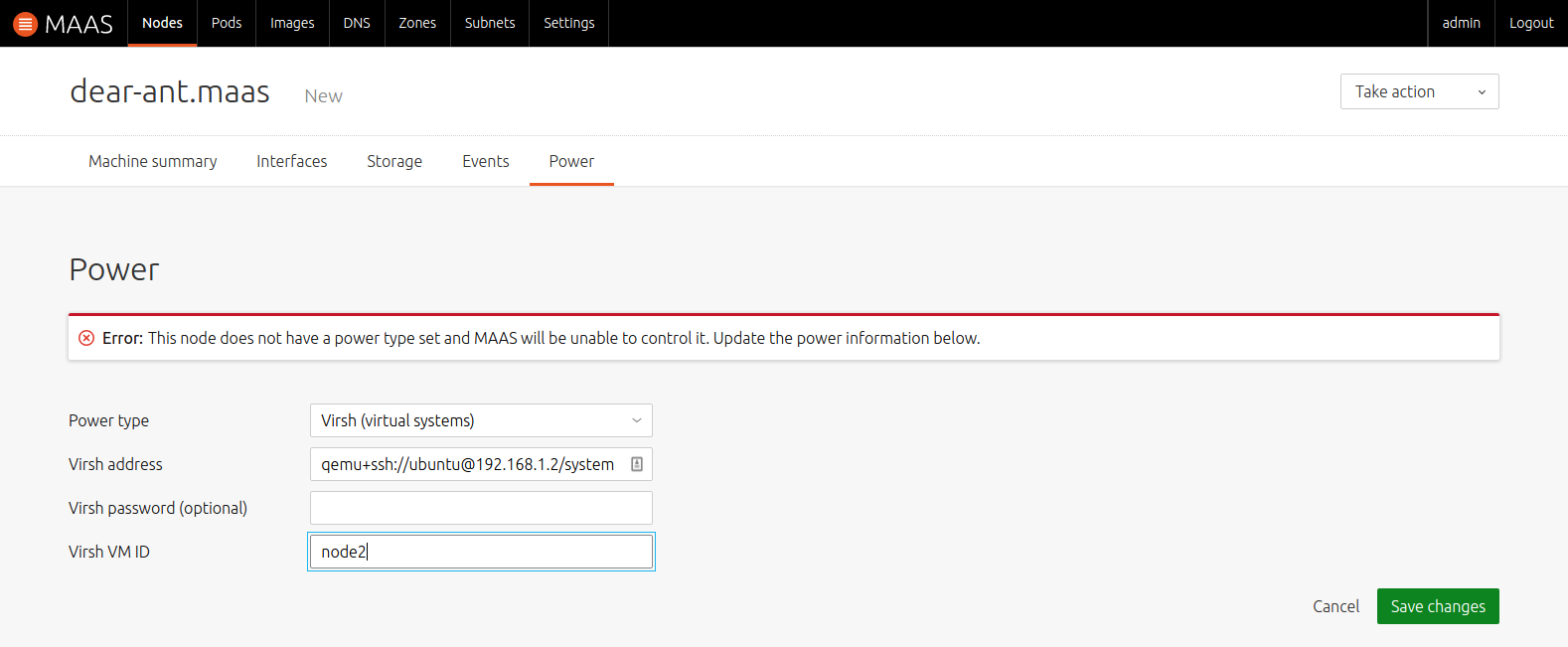BMC Power Types
In order for MAAS to fully manage a node it must be able to power cycle it. This is done via a communication channel with the BMC card of the node's underlying system. A newly added node is therefore incomplete until its power type has been configured.
To configure a node's power type begin by selecting the node (on the 'Nodes' page) and entering its 'Power' tab. If the power type is undefined the following will be displayed:

Choose a type in the dropdown menu that corresponds to the node's underlying machine's BMC card.

Fill in the resulting form. The information requested will depend upon the power type chosen.
Click 'Save changes' to finish. Once that's done, a power check will be performed on the node. This is a good indication of whether MAAS can communicate properly with the node. A successful power check will quickly result in a power status of "Power off". A failed one will show:

If you get such an error double-check your entered values by editing the power type. Also consider another power type altogether. Another cause may be at the networking level; traffic may be getting filtered between the rack controller and the BMC card.
Example: Virsh (KVM) power type
Consider a node backed by KVM. Below, a 'Power type' of Virsh has been
selected and the 'Power address' of qemu+ssh://ubuntu@192.168.1.2/system has
been entered (replace values as appropriate). Finally, and out of necessity for
virsh, the value of 'Power ID' is the KVM domain (guest) name, here node2.

Note: The node's hostname according to MAAS is a randomly chosen string (here dear.ant). This would normally be edited to reflect the hostname of the underlying machine.
See MAAS CLI for an example of how to edit a power type with the CLI.
See Add nodes for help in setting up MAAS and KVM to work together.
BMC driver support
MAAS supports many types of BMC hardware yet not all the drivers have the same capabilities. See the below table for a feature comparison of the BMC drivers currently supported by MAAS.
| Power Driver (X=supported) | PXE Next Boot | Power Querying | Chassis/Pod Configuration | Enhanced UI Error Reporting | BMC Enlistment |
|---|---|---|---|---|---|
| American Power Conversion (APC) - PDU | |||||
| Cisco UCS Manager | X | X | X | ||
| Digital Loggers, Inc. - PDU | |||||
Facebook's Wedge * |
|||||
| HP Moonshot - iLO Chassis Manager | X | X | X | ||
| HP Moonshot - iLO4 (IPMI) | X | X | X | ||
| IBM Hardware Management Console (HMC) | X | X | |||
| IPMI | X | X | X | X | |
| Intel AMT | X | X | X | ||
| Manual | |||||
| Microsoft OCS - Chassis Manager | X | X | X | ||
| OpenStack Nova | X | ||||
| Rack Scale Design | X | X | X | ||
| SeaMicro 15000 | X | X | X | ||
| Sentry Switch CDU - PDU | |||||
| VMWare | X | X | X | ||
| Virsh (virtual systems) | X | X | X |
* The 'Facebook's Wedge' OpenBMC power driver is considered experimental at this time.
